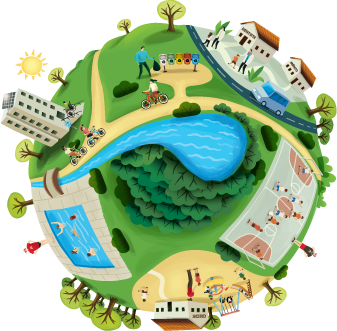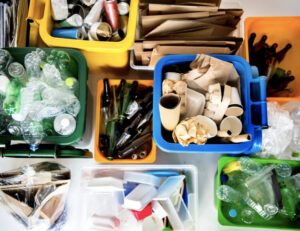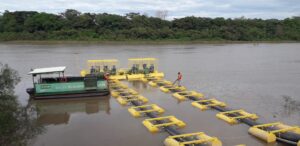CONNECT
 Recycling plays a vital role in environmental preservation and the promotion of sustainability. The main goal of recycling is to reduce the amount of waste sent to landfills, conserve natural resources, and reduce pollution.
Recycling plays a vital role in environmental preservation and the promotion of sustainability. The main goal of recycling is to reduce the amount of waste sent to landfills, conserve natural resources, and reduce pollution.
The trash containment raft is an important part of this process. Its importance lies in its ability to intercept and collect waste before it causes irreversible damage to the marine environment. This waste poses a serious threat to marine ecosystems. The raft helps reduce pollution by preventing solid waste from entering aquatic ecosystems and harming biodiversity and wildlife, polluting the waters and negatively affecting coastal ecosystems.
Watch the video “Recycling for Kids | Plastic, Glass and Paper Recycling”:
CONTEMPLATE
• How does recycling contribute to the conservation of natural resources?
• How can recycling be encouraged and promoted in communities?
ACTIVITY PROPOSAL
The trash containment raft is a floating structure designed to capture floating solid waste in bodies of water. Its effectiveness depends on factors such as design, collection systems, maintenance, and community engagement. Equipped with floating barriers and collection systems, it retains waste, preventing contamination of aquatic ecosystems. When operated efficiently and well maintained, the raft plays a crucial role in reducing pollution and protecting marine life.
BUILD
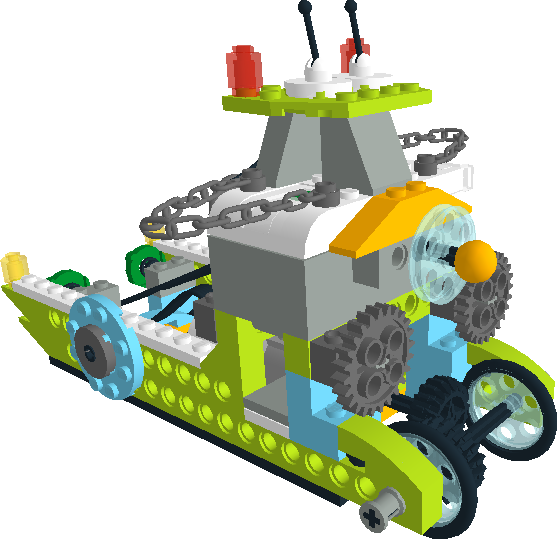
Build a trash containment raft using the LEGO® EDUCATION WeDo 2.0 Technology Kit.
Click the button to download the file.
Watch the video to see how the trash containment raft works:
ASSEMBLY PROGRAMMING
Make the trash containment raft move as shown in the video.
1. Create the programming as shown below:
2. Explain to the rest of the class how the trash containment raft worked.
CONTINUE
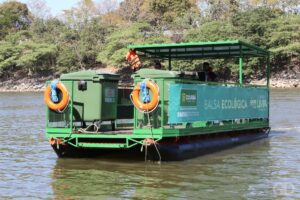 Answer the questions and share your answers with your classmates.
Answer the questions and share your answers with your classmates.
• Did you have any difficulty inserting the programming?
• Did the prototype move correctly?
After construction, store all materials used.

